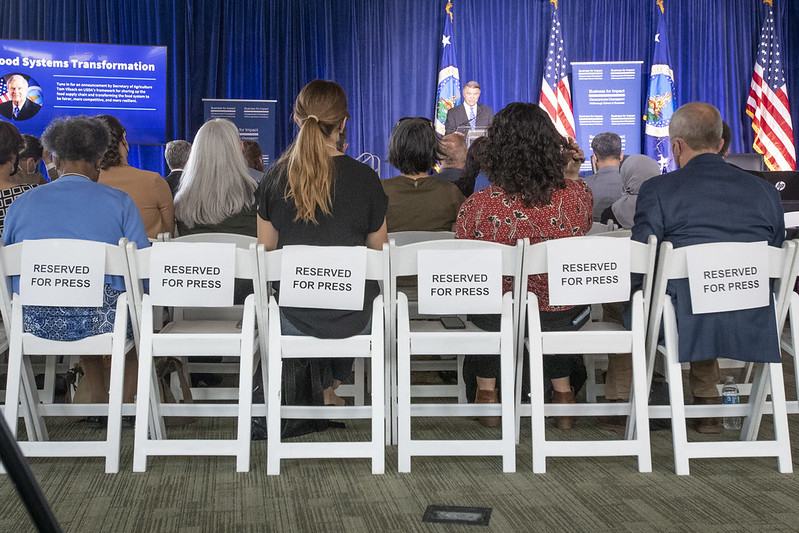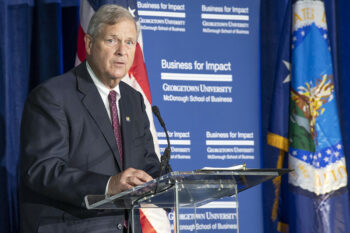
USDA has announced a new framework aimed at transforming the U.S. food system for the benefit of producers, consumers, and rural communities. Speaking at the launch at Georgetown University, USDA Secretary of Agriculture Tom Vilsack said that a transformed food system was a big part of how America becomes more resilient and competitive in the face of current challenges, such as the pandemic and Russia’s war against Ukraine, and against future threats.

“I believe a transformed food system will make it easier to adapt to, and mitigate, the severe consequences of a changing climate while not sacrificing agricultural production by reducing the carbon footprint of food production,” he said.
“I believe a transformed food system will deliver a better deal for farmers, ranchers, growers and consumers through more, new and better markets, also stimulating our rural economy.”
The framework targets supply chain improvements through a series of investments in four areas – food production, food processing, food distribution and aggregation, and markets and consumers.
Highlights include:
- An investment of up to $300 million in a new Organic Transition Initiative to provide comprehensive support for farmers to transition to organic production.
- Up to $100 million to support the development of a pipeline of well-trained workers and safe workplaces in the meat and poultry processing sector. This will address the current lack of training programs available to develop the reliable, well-trained workforce essential to the success of independent meat and poultry processing facilities.
- Investing up to $90 million to prevent and reduce food loss and waste and avoid the unnecessary use of energy as well as methane and CO2 emissions.
- Increasing funding by $155 million to the Healthy Food Financing Initiative– a program that increases access to healthy foods in underserved areas. It also provides new market opportunities for farmers and ranchers, stabilizes small and independent retailers, and creates quality jobs and economic opportunity in low-income communities.


